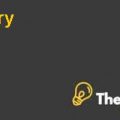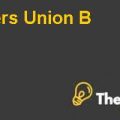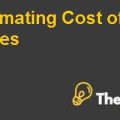ARUNDEL PARTNERS THE SEQUEL PROJECT Case Study Solutions
Why do the principals of Arundel Partners think that they can make money buying movie sequel rights? Why do they want to buy a portfolio rather than negotiating film by film?
There is high volatility associated with the success of a particular movie due to which the principles of Arundel Partners believe that they can make more money by purchasing the sequel rights of the movies. This volatility of the success of the movie would be important for the options and therefore, the principles of the company believe that they can gain advantage by making use of this volatility.
In the worst case, if the movie sequel is not successful then they also have the option of not exercising the options and thus they would not produce any sequels. Therefore, when Arundel Partners makes use of the options then the loss, which would be associated with a movie not performing, would be equal to the premium paid for the options at maximum. However, if the option is in the money then the company can advantage and thus make money. Arundel Partners can also make money through another method where the rights could be sold to the highest bidder if the company does not want to produce the sequel by itself.
It is highly important for Arundel Partners to buy the portfolio of rights of the movies in advance, as compared to negotiating on a film-by-film basis because, on individual basis, it would be able to form opinion about the movie and Arundel Partners can be placed at a disadvantaged position. This is because they will have to then bargain for each of the individual projects. Secondly, there also exists the information asymmetry where more information is held by the studio as compared to Arundel Partners. Furthermore, film-by-film negotiations would take up more time and efforts of Arundel Partners and the result might be zero. Therefore, it is in the best interests of Arundel Partners that before the production starts, they buy the portfolio of the rights.
Question 2
Estimate the per film value of a portfolio of sequel rights such as Arundel proposes to buy.
- First, evaluate using standard DCF.
The average of the PV of the cash flows of all the production companies as shown in exhibit 6 has been used to determine the per film value. The cost and revenue information about the hypothetical sequels has been used only. The discount rate of 12.36% back to 1989 has been used to generate the DCF value. However, the value of the per film sequel rights is negative $ 9.32 million. The computations are shown in the table below:
| TRADITIONAL DCF METHOD | ||||||
| 1989 | 1990 | 1991 | 1992 | 1993 | 1994 | |
| Revenues | ||||||
| US theatres | 10.4192 | |||||
| Other | 37.9737 | |||||
| Costs | ||||||
| Dist Fees | -12.863 | |||||
| Dist Expenses | -14.489 | |||||
| Negative Costs | -21.154 | |||||
| TOTALS | 0 | 0 | -21.154 | -27.352 | 10.4192 | 37.9737 |
| NPV | -$9.32 | |||||
- Second, analyze the above approach. What are the implicit assumptions? What are the problems with the sample, model, and decision rule? Can you address these in this framework?
There are a number of issues with the above approach such as the discount rate has been assumed as of 1989. The average US theatre, other revenues and all the costs have been used in the DCF model for all the sequel films of all the production companies. This might be the reason that we got a negative per film sequel right value. The problems with the sample are that there is significant difference in the costs of different production companies and similar is the case with the revenues. Therefore, the negative NPV invalidates our decision. These problems could be addressed in the model by computing the per film value for each of the production companies and then the positive per film values could be averaged to compute the average per film value.
ARUNDEL PARTNERS THE SEQUEL PROJECT Harvard Case Solution & Analysis
- Third, using Black-Scholes map the sequel characteristics to call option variables and value the portfolio.
The Black Scholes model has been used in this question for valuing the portfolio. The average hypothetical net inflow of the sequel has been estimated to be 21.57 million in the real options model. The state variable is the average hypothetical net inflow, which is discounted at 12.36%. The starting point value is $ 13.53 million as shown in the map below:...............
This is just a sample partial case solution. Please place the order on the website to order your own originally done case solution.










